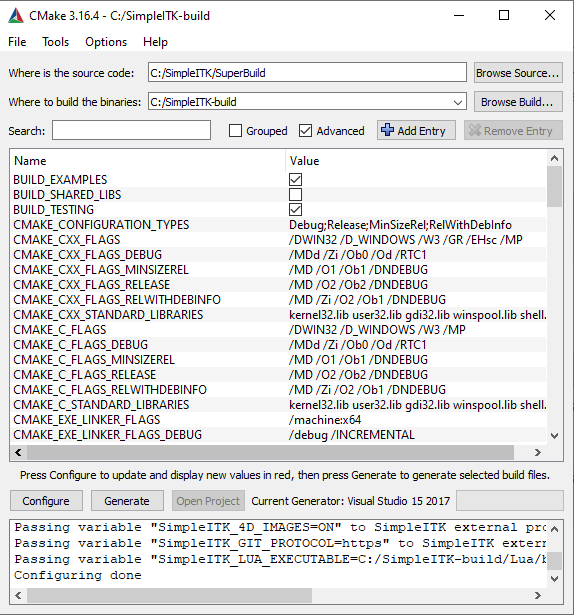
To uninstall use sudo dpkg -P foo or sudo apt purge foo. Check the mrts answer which presents the recommended best practice. Every sane CMake user should refrain from fiddling with CMAKECXXFLAGS directly and call the targetcompileoptions command instead. To reduce some possibly less-interesting output you might like to use the following options. UPDATE: This answer predates the Modern CMake era.

For example: Or you can add -DCMAKEVERBOSEMAKEFILE:BOOLON to the cmake command for permanent verbose command output from the generated Makefiles.
#Cmake set gcc full#
Once set, you can not change this variable. When you run make, add VERBOSE1 to see the full command output.
Or, when using the cmake (1) command-line tool's -install mode, one may specify a different prefix using the -prefix option:Install ルール (install()) CMake Version. This is the command that will be used as theThe CMAKE_INSTALL_PREFIX may be defined when configuring a build tree to set its installation prefix. Use the GNUInstallDirs module to provide GNU-style options for the layout of directories within the installation. On many systems, you may find that CMake is already installed or is available for installation with the standard package manager tool for the system.
#Cmake set gcc install#
Getting Started ¶ Getting and Installing CMake on Your Computer ¶ Before using CMake, you will need to install or build the CMake binaries on your system. Build OpenCV Download OpenCV and Cmake Build opencv with cmake Cmake configuration Press configure, choose visual studio 2015.
#Cmake set gcc windows#
( Not yet implemented) If the depending file is a Windows Store app, and the dependency is listed as a dependency in the application's package manifest, the dependency is resolved to that file. Prior to CMake 3.27, the results were reported with lowercase DLL file names, but the directory portion retained its casing. Recently I've added some Python scripts to a few places in the source tree. At this point, my binaries end up in cmake_install_prefix, and they can be executed with no additional work.

tmp/cc7OqtJX.s:220: Error: selected processor does not support `isb ' in ARM mode

tmp/cc7OqtJX.s:219: Error: selected processor does not support requested special purpose register - `msr basepri,r3' system/FreeRTOS/portable/MemMang/heap_4.c system -g -fdiagnostics-color=always -Wall -Wextra -Wpedantic -Werror -std=c11 -MD -MT system/FreeRTOS/CMakeFiles/freertos_kernel.dir/portable/MemMang/heap_4.c.obj -MF system/FreeRTOS/CMakeFiles/freertos_kernel.dir/portable/MemMang/heap_4.c.obj.d -o system/FreeRTOS/CMakeFiles/freertos_kernel.dir/portable/MemMang/heap_4.c.obj -c. I tried with C99 and C11 unfortunately got error to ASM line’s like this: /usr/bin/arm-none-eabi-gcc -DprojCOVERAGE_TEST=0 -I./system/FreeRTOS/include -I./system/FreeRTOS/portable/GCC/ARM_CM3 -isystem. Set_property(TARGET freertos_kernel PROPERTY C_STANDARD 90) I think this error happen because in the FreeRTOS, CMakelists.txt at line 296 say to compiler use C90 standard.

**attribute**( ( always_inline ) ) static inline uint8_t ucPortCountLeadingZeros( uint32_t ulBitmap )
Thus, to configure and build a CMake based project, you can run the following commands: cmake -G Ninjasystem/FreeRTOS/portable/GCC/ARM_CM3/portmacro.h:135:51: error: unknown type name 'inline' MSYS2 provided CMake defaults to Ninja (but this is not the default in upstream CMake, so its safest to explicitly specify it). I tried to add FreeRTOS on my CMake Project but in compile time I get some error like this.


 0 kommentar(er)
0 kommentar(er)
